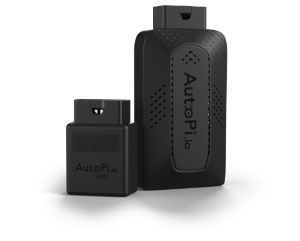Understanding Smart Traffic: A Modern Approach to Traffic Management
Smart traffic is a forward-thinking approach to managing traffic congestion and improving road safety by utilizing state-of-the-art technologies like Internet of Things, artificial intelligence (AI), and big data analytics. It's a fundamental component of smart cities, aiming to optimize urban mobility and make commuting more efficient and sustainable. How does smart traffic work? By analyzing real-time traffic data obtained through various sources such as smart traffic lights, sensors, cameras, and connected vehicles, smart traffic systems make predictive and adaptive decisions regarding traffic management. They consider all road users, from private vehicles and public transportation to emergency vehicles and pedestrians. For instance, if data shows a traffic jam forming, the smart traffic management system adjusts the traffic light signals, giving priority to emergency vehicles or reroutes traffic to less congested roads. It can also ensure that pedestrian crosswalks remain safe and efficient during peak traffic periods. This ability to adapt to traffic conditions in real time marks the evolution from traditional traffic management systems to intelligent traffic management.
Smart Traffic Control System: Revolutionizing Urban Mobility
Urban mobility faces significant challenges, especially with growing traffic density in metropolitan areas. Enter smart traffic control systems. With IoT integration, these systems adapt and optimize traffic flow based on real-time traffic data, significantly improving transportation within the city.
Smart traffic control systems function by harnessing a variety of IoT-enabled devices - including smart traffic lights, connected vehicles, and road sensors. They process real-time data to manage traffic conditions dynamically, thereby addressing traffic congestion before it escalates into a full-blown traffic jam.
The Role of Smart Traffic Lights in Intelligent Traffic Management
Smart traffic lights play a crucial role in any smart traffic control system. Unlike traditional traffic lights that operate on fixed timers, smart traffic lights can adapt to varying traffic conditions. They use sensors and cameras to detect vehicle presence and volume at each intersection.
By adjusting signal durations and intervals based on real-time traffic data, smart traffic lights enhance the flow of traffic and reduce congestion. In essence, they contribute significantly to making traffic management more efficient, especially at busy intersections.
The Impact of IoT in Traffic Management Systems
IoT technology is reshaping traffic management systems. By allowing everyday objects, vehicles, and infrastructure to be connected and controlled via the internet, it is creating a network of devices that interact, gather data, and initiate actions.
In the realm of traffic management, IoT solutions optimize traffic flow by recognizing changing patterns and making necessary adjustments. This approach results in a smart traffic management system that can adapt traffic signals based on live traffic conditions, providing a flexible and responsive solution to the perennial issue of traffic congestion.

Smart Intersections and Real-Time Data Analysis: The Future of Traffic Management
At the heart of smart traffic management lies the concept of 'Smart Intersections'. These intersections make use of wireless communications within vehicles. Equipped with advanced sensors, onboard computer processing, GPS coordinates, and wireless networks, they collect real-time vehicle data including travel time, position, speed, and acceleration.

This real-time data is then used by traffic signal control systems, which can optimize green light timings and adjust traffic signals based on live traffic conditions. In essence, smart intersections work as nerve centers of the smart traffic management system, providing comprehensive data that aids in the efficient regulation of traffic flow.
Collectively, these elements of smart traffic not only revolutionize how we manage traffic but also pave the way for more sustainable and efficient cities. With reduced congestion and improved road safety, they enhance the quality of urban life for all citizens.






